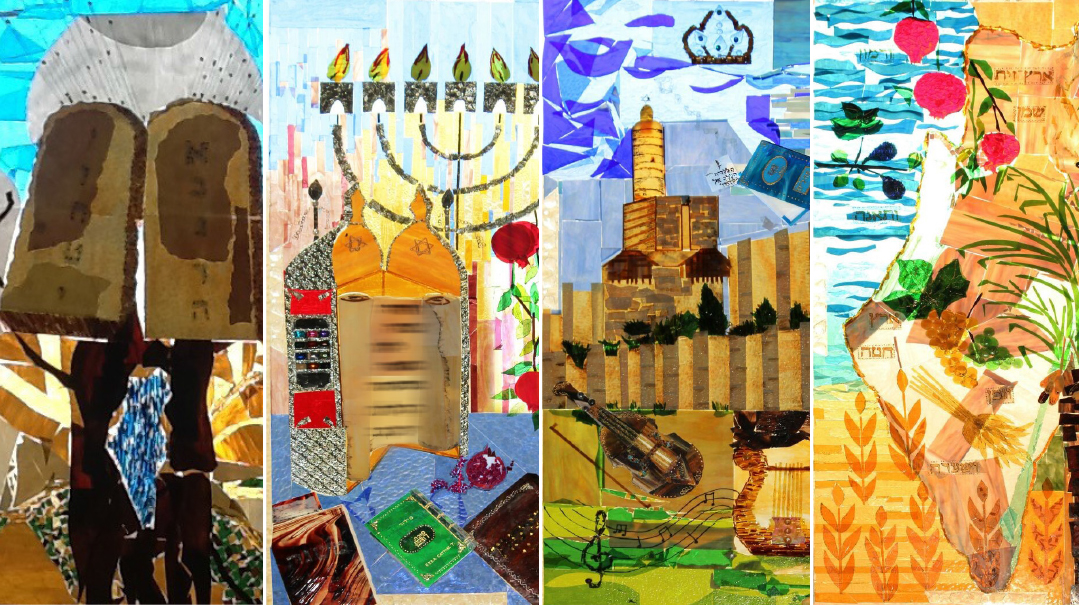Window to the Soul

Celia Tawil de Cattan’s art uses myriad mediums — all threaded with dreams

"A work of art which did not begin in emotion is not art.” —Paul Cezzane
I meet Celia Tawil de Cattan at a small, COVID-style engagement celebration in Jerusalem.
“You have to see the windows she made,” someone says.
And Celia starts to get teary eyed. “It was from G-d, a huge project…” She chokes up, brimming over with emotion at the mere mention of her work. If that’s not art, I don’t know what is.
I also know there’s a story there, a connection stronger than words.
“I’ll take you to see,” Celia says, smiling through her tears.

Autodidact Artist
First, I am invited to Celia’s studio which, due to COVID, is now in her house. Her home is white, glass, modernistic, with windows that spill late afternoon sun into the rooms. There are touches of “old world” too. A fireplace centerpieces the room. Hints of Mexico City, her birthplace and home for decades, are in the flashes of warm color in the cushions, rugs, and throws. Art — in every form — abounds.
“I’m an autodidact,” Celia says as she shows me around. “Whatever I know, I taught myself. I’ve had no formal art training, but I’m learning all my life. From as young as 12 years old, I’ve been experimenting with different media. I learned day by day, through trial and error.”
This grandmother and great-grandmother has used it all — canvas, wood, ceramic, aluminum, copper, zinc, glass. “I use the medium that reflects what I want to say,” says Celia, who primarily paints and sculpts.
She shows me a ceramic circle of people, generic figures holding hands, embracing, and two larger figures encompassed by the rest. “This is one of the first pieces I did after making aliyah seven years ago,” says Celia. “I missed my own family, the clear roles my husband and I had within it as heads of our family. But all of the Jewish people are my family, and that’s what I tried to represent in this sculpture.”
Reminiscing, Celia adds, “When I moved to Israel, walked the streets, I felt different, lighter, free. I felt a sense of calm and peace that we didn’t have in Mexico.”
She explains that while the Jewish community in Mexico City was basically safe, there was wariness and cautiousness. The Jews were eager to support the government, to build connections, to buy their safety. Celia remembers her uncles having VIP visitors over, hushed conversations, exchanges of money. “Mexico wasn’t — isn’t — the straightest place,” she says.
Celia then takes me into her studio, which is dominated by two easels. Both have canvases with images of hands on them, as Celia was recently commissioned to paint a set of five hand-themed pictures for a long hallway. So far, she’s completed a child’s hand gripping an adult’s and is currently working on a tower of fists. “The other images will come to me… in time,” says Celia with a quiet confidence.
The Mexico City that Celia grew up in was a bastion of art and culture. In her youth, Celia developed an interest in museums and galleries, and, encouraged by her parents, would spend hours exploring them, trying to learn from every piece. Early on, she was exposed to Rembrandt and Leonardo da Vinci — two artists that inspire her until today.
But her primary inspiration is Marc Chagall, an early Modernist, who had made his mark on Mexico — and it on him — back in the ‘40s when he painted the set design for the major ballet performance Aleko that premiered in Mexico City in 1942.
Oops! We could not locate your form.













